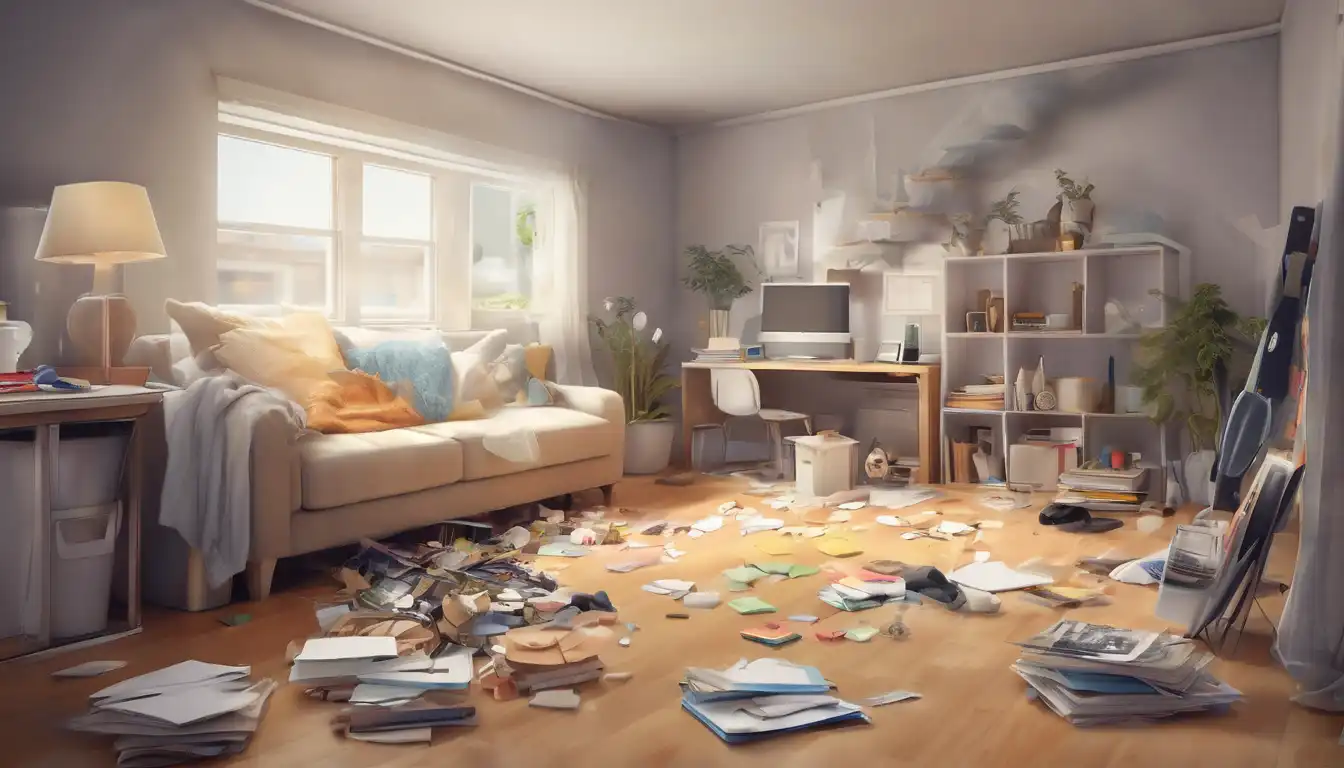Transform Your Space: The Ultimate Guide to Quick Decluttering
Are you tired of living in a cluttered environment that drains your energy and productivity? Decluttering your home doesn't have to be an overwhelming, time-consuming process. With the right approach, you can transform your living space from chaotic to calm in just a few hours. This comprehensive guide will walk you through easy, actionable steps to declutter your home quickly and efficiently.
Why Decluttering Matters More Than You Think
Before diving into the practical steps, it's important to understand why decluttering is worth your time. A clutter-free home reduces stress, saves time searching for items, creates more functional living spaces, and can even improve your mental clarity. Studies show that organized environments contribute to better focus and reduced anxiety levels. Whether you're preparing for a move, wanting to simplify your life, or just tired of the mess, these strategies will help you achieve your goals.
Step 1: Set Clear Goals and Timeline
Start by defining what you want to accomplish. Are you focusing on one room or tackling the entire house? Set realistic expectations - you won't transform everything in one day. Break your decluttering project into manageable chunks. For example, dedicate 30 minutes to your kitchen counters one day, then tackle the bathroom cabinet the next. This approach prevents burnout and makes the process feel less daunting.
Step 2: Gather Your Decluttering Toolkit
Preparation is key to efficient decluttering. Gather these essential supplies before you begin:
- Three boxes or bags labeled "Keep," "Donate," and "Trash"
- Cleaning supplies for wiping down surfaces
- Storage containers for organizing kept items
- A timer to maintain focus
- Music or podcasts to make the process enjoyable
Step 3: The Room-by-Room Approach
Focus on one area at a time to maintain momentum. Here's how to tackle different spaces:
Living Room Decluttering
Start with surfaces like coffee tables, shelves, and entertainment centers. Remove everything and only return items that serve a purpose or bring joy. Consider implementing our smart storage solutions to maintain organization long-term.
Kitchen Organization
Empty one cabinet or drawer at a time. Discard expired food, duplicate utensils, and items you haven't used in the past year. Group similar items together and consider drawer dividers for better organization.
Bedroom Simplification
Focus on closets, dressers, and nightstands. Use the "one-year rule" - if you haven't worn or used something in the past year, it's time to let it go. For more specific guidance, check out our wardrobe organization tips.
Step 4: The Four-Box Method
This proven technique ensures you make decisive choices about every item:
- Keep: Items you use regularly and love
- Donate/Sell: Quality items you no longer need but could benefit others
- Trash/Recycle: Broken, expired, or unusable items
- Relocate: Items that belong in another room
Step 5: Implement the 15-Minute Daily Habit
Maintaining a clutter-free home requires consistency. Set a timer for 15 minutes each day to tackle small decluttering tasks. This could include clearing countertops, sorting mail, or organizing a single drawer. This daily habit prevents clutter from accumulating again.
Step 6: Smart Storage Solutions
Once you've pared down your belongings, organize what remains effectively:
- Use vertical space with shelves and hanging organizers
- Implement the "one in, one out" rule for new acquisitions
- Label containers for easy identification
- Create designated homes for frequently used items
Step 7: Digital Decluttering
Don't forget about digital clutter! Organize your computer files, clean up your email inbox, and declutter your phone. A digital cleanup can be just as refreshing as physical decluttering.
Common Decluttering Mistakes to Avoid
Many people sabotage their decluttering efforts with these common errors:
- Starting without a plan
- Trying to do everything at once
- Keeping items out of guilt
- Not having a system for incoming items
- Forgetting to maintain the system
Maintaining Your Clutter-Free Home
The real challenge isn't decluttering - it's staying decluttered. Implement these maintenance strategies:
- Schedule monthly "mini-declutter" sessions
- Practice mindful purchasing habits
- Encourage family members to participate
- Regularly reassess your storage systems
When to Seek Professional Help
If you're struggling with extreme clutter or emotional attachments to items, consider consulting a professional organizer. They can provide objective guidance and customized systems for your specific needs. For more advanced techniques, explore our professional organization resources.
The Psychological Benefits of Decluttering
Beyond the physical space improvements, decluttering offers significant mental health benefits. Many people report reduced anxiety, improved sleep, and increased productivity after decluttering their homes. The process of letting go of physical items can also help release emotional baggage.
Getting Family Members on Board
If you share your home with others, decluttering requires cooperation. Have open conversations about the benefits, set shared goals, and create systems that work for everyone. Lead by example and celebrate small victories together.
Final Thoughts: Your Journey to a Clutter-Free Life
Decluttering is more than just cleaning - it's about creating a home that supports your lifestyle and well-being. Remember that perfection isn't the goal; progress is. Start small, be consistent, and don't be afraid to adjust your approach as needed. The peace and clarity you'll gain from a organized home are well worth the effort.
Ready to begin your decluttering journey? Start with just 15 minutes today. Choose one small area and experience the immediate satisfaction of creating order from chaos. Your future self will thank you for taking these simple steps toward a more organized, peaceful living environment.
